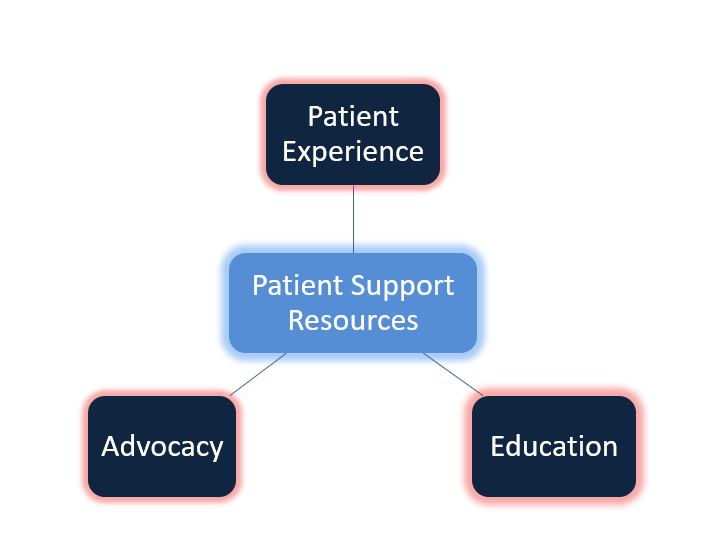In the last year of my fellowship continuity clinic, my “new patient” visits were allotted 30 minutes and my “return” patients were scheduled for 15 minutes. Despite having more flexibility than my attendings, it never seemed like I was able to offer all of the critical thinking, counseling, and education to which I aspired. The myriad constraints of electronic documentation, overbooking, and care fragmentation ultimately result in limited face-to-face time between patients and their physicians. I realized that, regardless of their health literacy, patients are forced to seek health information from other sources – whether these sources were friends and family, traditional media, or social media platforms.
When I began my training in our specialized inherited cardiomyopathy clinic, I learned about a number of support resources for patients and by patients with these complex disorders. These resources fulfill many of our patients’ needs, ones that our current system does not give physicians the time and space to acknowledge. Here, I will use the example of hypertrophic cardiomyopathy (HCM) to illustrate a few benefits of understanding this landscape – for us and for our patients.

The Patient Experience
In our specialized clinic embedded in a large academic medical center, many of the individuals we see are referred from outside of our health system. We spend a significant amount of “pajama time” wading through the mass of progress notes, procedure reports, and imaging data to ensure our consultations incorporate all of the available and pertinent information.1 In doing this with such frequency in this setting or in any other specialized clinic, we can become desensitized to the patient’s experience of wading through the masses.
This month, Cynthia Burstein Waldman, the creator/founder of HCMBeat, posted a blog about her 12-year post-myectomy follow-up at Mayo Clinic. Ms. Waldman was diagnosed with HCM almost 20 years ago and has since started a website to assist others living with HCM. In her blog about this visit, she details her pre-visit preparations, skills in navigating patient portals, issues with phlebotomy after being instructed to fast for 12 hours, cardiovascular testing, clinic experience, and post-visit communication. Reading her account and interpretation of this encounter was incredibly enlightening for me, especially because it allowed me to appreciate the aspects of a “follow-up visit” that patients might genuinely value and consider essential to a good experience. Patient-authored blogs like this one and the AHA’s Support Network on Cardiomyopathy can help contextualize the patient experience for us in ways that cannot be accomplished solely through periodic clinic visits.
Education
One of the core values of the Hypertrophic Cardiomyopathy Association, the largest U.S. organization serving individuals with HCM, is to provide “education to patients, families, the medical community and the public about HCM.” Within this core value, the HCMA provides education about HCM symptoms and treatment, raises awareness about malignant arrhythmias and sudden cardiac death in HCM, and promotes HCM research. Similar to HCMBeat, HCMA was founded by another woman affected by HCM, Lisa Salberg. The website’s Resources section is very well curated with information on HCM itself, finding an HCM center, links to academic journal articles about HCM, and it also has a multimedia collection with webinars and podcasts related to these topics. While intended to be primarily patient-facing, the website also serves as a valuable educational resource for clinicians. In our current age of medical mistrust and ever-present threats of medical misinformation, resources like this one represent one approach for patients and for clinicians to close the literacy gap.
Advocacy
In January, Christa Trexler, PhD wrote a great AHA Early Career blog about the importance of advocacy in cardiovascular medicine and research. Staying abreast of the active legislation and political conversations regarding health care can be daunting for clinicians, especially those without health policy experience, but the above mentioned websites also have dedicated sections on advocacy, state and federal legislation pertaining to HCM, and on navigating the U.S. healthcare system. These toolkits are a great place to start for clinicians interested in taking a more active role in educating our legislators and promoting change in our communities.
Do you know of similar patient support resources in your field? If not, I encourage you to start by checking out the AHA’s Support Network and engaging with patients and caregivers of cardiovascular disease and stroke.
References
- Sinsky C, Colligan L, Li L, et al. Allocation of Physician Time in Ambulatory Practice: A Time and Motion Study in 4 Specialties. Ann Intern Med. 2016;165(11):753-760.